We Use Cookies
This website uses cookies to ensure you get the best experience on our website.
Garner valuable insights from images, videos, sensors and geospatial data to discover endless possibilities using Artificial Intelligence and Machine Learning.
Meticulously label/annotate different types and size of images with precise capturing tools to make it recognizable for machines.
Annotate 2D and 3D patterns in running images and account for all moving objects in a video frame to train a wide range of ML models.
Bring together inputs from multiple sensors and disparate sources such as Radars, LiDARs, and Cameras to develop a single model of the surroundings of an object/vehicle.
Power autonomous vehicles, drones, and other computer vision applications to enable accurate interpretation of images and video using high-quality datasets.
Garner valuable insights from images, videos, sensors and geospatial data to discover endless possibilities using Artificial Intelligence and Machine Learning.
NextWealth’s NLP capabilities in audio and text can help enterprises in query/content understanding as well as improve both user experience and insight discovery.
Make texts comprehensible to machines by identifying important keywords, classifying, and tagging texts within the predetermined set of categories to enable virtual assistants/chatbots etc to easily understand the texts multiple dialects and languages.
ML models require annotated audio to make sound more comprehensible for chatbots or virtual assistant devices. By providing audio annotation service to recorded sounds or speech, NextWealth adds metadata to make the human – machine interaction more meaningful.
NextWealth’s NLP capabilities in audio and text can help enterprises in query/content understanding as well as improve both user experience and insight discovery.
AI has helped the eCommerce industry maintain its dynamic operations to ensure a seamless customer experience. Craft smart and digitally focussed customer experiences that demand quality and are strategically lean towards transformational growth.
Identify and replace incomplete, inaccurate, irrelevant, and complex data and records.
AI has helped the eCommerce industry maintain its dynamic operations to ensure a seamless customer experience. Craft smart and digitally focussed customer experiences that demand quality and are strategically lean towards transformational growth.
BPO Outsourcing offers businesses the flexibility to scale their operations up or down, accelerate growth and improve the bottom line while keeping customers satisfied.
Digital CX involves handling the interactions of customers with businesses across their physical and digital touchpoints delivering customer experience that retains the customer’s loyalty and trust in the brand.
Back-office services refer to those non-core activities ranging from document verification and data entry to financial and accounting processes, medical coding and billing to identity verification services to achieve greater accuracy, agility, and responsiveness.
BPO Outsourcing offers businesses the flexibility to scale their operations up or down, accelerate growth and improve the bottom line while keeping customers satisfied.
BPO Outsourcing offers businesses the flexibility to scale their operations up or down, accelerate growth and improve the bottom line while keeping customers satisfied.
BPO Outsourcing offers businesses the flexibility to scale their operations up or down, accelerate growth and improve the bottom line while keeping customers satisfied.
Garner valuable insights from images, videos, sensors and geospatial data to discover endless possibilities using Artificial Intelligence and Machine Learning.
Meticulously label/annotate different types and size of images with precise capturing tools to make it recognizable for machines.
Annotate 2D and 3D patterns in running images and account for all moving objects in a video frame to train a wide range of ML models.
Bring together inputs from multiple sensors and disparate sources such as Radars, LiDARs, and Cameras to develop a single model of the surroundings of an object/vehicle.
Power autonomous vehicles, drones, and other computer vision applications to enable accurate interpretation of images and video using high-quality datasets.
Garner valuable insights from images, videos, sensors and geospatial data to discover endless possibilities using Artificial Intelligence and Machine Learning.
NextWealth’s NLP capabilities in audio and text can help enterprises in query/content understanding as well as improve both user experience and insight discovery.
Make texts comprehensible to machines by identifying important keywords, classifying, and tagging texts within the predetermined set of categories to enable virtual assistants/chatbots etc to easily understand the texts multiple dialects and languages.
ML models require annotated audio to make sound more comprehensible for chatbots or virtual assistant devices. By providing audio annotation service to recorded sounds or speech, NextWealth adds metadata to make the human – machine interaction more meaningful.
NextWealth’s NLP capabilities in audio and text can help enterprises in query/content understanding as well as improve both user experience and insight discovery.
AI has helped the eCommerce industry maintain its dynamic operations to ensure a seamless customer experience. Craft smart and digitally focussed customer experiences that demand quality and are strategically lean towards transformational growth.
Identify and replace incomplete, inaccurate, irrelevant, and complex data and records.
AI has helped the eCommerce industry maintain its dynamic operations to ensure a seamless customer experience. Craft smart and digitally focussed customer experiences that demand quality and are strategically lean towards transformational growth.
BPO Outsourcing offers businesses the flexibility to scale their operations up or down, accelerate growth and improve the bottom line while keeping customers satisfied.
Digital CX involves handling the interactions of customers with businesses across their physical and digital touchpoints delivering customer experience that retains the customer’s loyalty and trust in the brand.
Back-office services refer to those non-core activities ranging from document verification and data entry to financial and accounting processes, medical coding and billing to identity verification services to achieve greater accuracy, agility, and responsiveness.
BPO Outsourcing offers businesses the flexibility to scale their operations up or down, accelerate growth and improve the bottom line while keeping customers satisfied.
NextWealth is a social impact organization providing world-class AI/ML data services, digital customer experience and IT/BPM services to customers globally.
NextWealth was founded by Wipro veterans – Dr. Sridhar Mitta, Mr. Anand Talwai and Ms. Mythily Ramesh with the purpose of providing jobs to graduates in small towns, focussing on women.
NextWealth has eleven delivery centers – Mallasamudram, Chittoor, Hubballi, Bhilai, Mysore, Vellore, Puducherry, Salem, Jaipur, Udaipur and Kumbakonam employing more than 4,500 small town graduates
NextWealth, with its unique distributed delivery model, has succeeded in bringing hi-tech employment to small towns, making a difference in peoples’ life, thus creating a social impact.
At NextWealth, we live and breathe our values every single day. Our core values are integrity, excellence in work, respect for every individual, commitment to commitment and being socially responsible.
NextWealth is a social impact organization providing world-class AI/ML data services, digital customer experience and IT/BPM services to customers globally.
There is something for everyone here at NextWealth, whether you are a data scientist, operations head, CFO, research person, machine learning enthusiast or students looking for information.
Check out our latest videos on our purpose, domain capabilities, use-cases, customer testimonials, social impact stories and many more.
Learn how NextWealth has been a thinking partner to its clients across AI/ML, eCommerce, BFSI, Healthcare and other industries.
NextWealth’s team of domain experts share their knowledge on trending topics such as Active Learning, Natural Language Processing, Employee Inner Wellbeing, etc helping us be up to date.
Check out NextWealth’s latest news, awards, accolades and achievements here.
There is something for everyone here at NextWealth, whether you are a data scientist, operations head, CFO, research person, machine learning enthusiast or students looking for information.
The NextWealth Partner Ecosystem helps create unique winning partnerships that offer mutual business growth opportunities and joint value, driven by collaboration, executive commitment and thought leadership.
NextWealth values all its partners who help us integrate systems, maintain ecosystem, resellers and annotation partners.
NextWealth has culture codes in place which help both partners and the inhouse team to work in a conducive environment to achieve goals as a team.
NextWealth has all the possible questions right here to clear all your doubts to build a trust even before we start the engagement.
The NextWealth Partner Ecosystem helps create unique winning partnerships that offer mutual business growth opportunities and joint value, driven by collaboration, executive commitment and thought leadership.
Garner valuable insights from images, videos, sensors and geospatial data to discover endless possibilities using Artificial Intelligence and Machine Learning.
Meticulously label/annotate different types and size of images with precise capturing tools to make it recognizable for machines.
Annotate 2D and 3D patterns in running images and account for all moving objects in a video frame to train a wide range of ML models.
Bring together inputs from multiple sensors and disparate sources such as Radars, LiDARs, and Cameras to develop a single model of the surroundings of an object/vehicle.
Power autonomous vehicles, drones, and other computer vision applications to enable accurate interpretation of images and video using high-quality datasets.
Garner valuable insights from images, videos, sensors and geospatial data to discover endless possibilities using Artificial Intelligence and Machine Learning.
NextWealth’s NLP capabilities in audio and text can help enterprises in query/content understanding as well as improve both user experience and insight discovery.
Make texts comprehensible to machines by identifying important keywords, classifying, and tagging texts within the predetermined set of categories to enable virtual assistants/chatbots etc to easily understand the texts multiple dialects and languages.
ML models require annotated audio to make sound more comprehensible for chatbots or virtual assistant devices. By providing audio annotation service to recorded sounds or speech, NextWealth adds metadata to make the human – machine interaction more meaningful.
NextWealth’s NLP capabilities in audio and text can help enterprises in query/content understanding as well as improve both user experience and insight discovery.
AI has helped the eCommerce industry maintain its dynamic operations to ensure a seamless customer experience. Craft smart and digitally focussed customer experiences that demand quality and are strategically lean towards transformational growth.
Identify and replace incomplete, inaccurate, irrelevant, and complex data and records.
AI has helped the eCommerce industry maintain its dynamic operations to ensure a seamless customer experience. Craft smart and digitally focussed customer experiences that demand quality and are strategically lean towards transformational growth.
BPO Outsourcing offers businesses the flexibility to scale their operations up or down, accelerate growth and improve the bottom line while keeping customers satisfied.
Digital CX involves handling the interactions of customers with businesses across their physical and digital touchpoints delivering customer experience that retains the customer’s loyalty and trust in the brand.
Back-office services refer to those non-core activities ranging from document verification and data entry to financial and accounting processes, medical coding and billing to identity verification services to achieve greater accuracy, agility, and responsiveness.
BPO Outsourcing offers businesses the flexibility to scale their operations up or down, accelerate growth and improve the bottom line while keeping customers satisfied.
BPO Outsourcing offers businesses the flexibility to scale their operations up or down, accelerate growth and improve the bottom line while keeping customers satisfied.
BPO Outsourcing offers businesses the flexibility to scale their operations up or down, accelerate growth and improve the bottom line while keeping customers satisfied.
Garner valuable insights from images, videos, sensors and geospatial data to discover endless possibilities using Artificial Intelligence and Machine Learning.
Meticulously label/annotate different types and size of images with precise capturing tools to make it recognizable for machines.
Annotate 2D and 3D patterns in running images and account for all moving objects in a video frame to train a wide range of ML models.
Bring together inputs from multiple sensors and disparate sources such as Radars, LiDARs, and Cameras to develop a single model of the surroundings of an object/vehicle.
Power autonomous vehicles, drones, and other computer vision applications to enable accurate interpretation of images and video using high-quality datasets.
Garner valuable insights from images, videos, sensors and geospatial data to discover endless possibilities using Artificial Intelligence and Machine Learning.
NextWealth’s NLP capabilities in audio and text can help enterprises in query/content understanding as well as improve both user experience and insight discovery.
Make texts comprehensible to machines by identifying important keywords, classifying, and tagging texts within the predetermined set of categories to enable virtual assistants/chatbots etc to easily understand the texts multiple dialects and languages.
ML models require annotated audio to make sound more comprehensible for chatbots or virtual assistant devices. By providing audio annotation service to recorded sounds or speech, NextWealth adds metadata to make the human – machine interaction more meaningful.
NextWealth’s NLP capabilities in audio and text can help enterprises in query/content understanding as well as improve both user experience and insight discovery.
AI has helped the eCommerce industry maintain its dynamic operations to ensure a seamless customer experience. Craft smart and digitally focussed customer experiences that demand quality and are strategically lean towards transformational growth.
Identify and replace incomplete, inaccurate, irrelevant, and complex data and records.
AI has helped the eCommerce industry maintain its dynamic operations to ensure a seamless customer experience. Craft smart and digitally focussed customer experiences that demand quality and are strategically lean towards transformational growth.
BPO Outsourcing offers businesses the flexibility to scale their operations up or down, accelerate growth and improve the bottom line while keeping customers satisfied.
Digital CX involves handling the interactions of customers with businesses across their physical and digital touchpoints delivering customer experience that retains the customer’s loyalty and trust in the brand.
Back-office services refer to those non-core activities ranging from document verification and data entry to financial and accounting processes, medical coding and billing to identity verification services to achieve greater accuracy, agility, and responsiveness.
BPO Outsourcing offers businesses the flexibility to scale their operations up or down, accelerate growth and improve the bottom line while keeping customers satisfied.
NextWealth is a social impact organization providing world-class AI/ML data services, digital customer experience and IT/BPM services to customers globally.
NextWealth was founded by Wipro veterans – Dr. Sridhar Mitta, Mr. Anand Talwai and Ms. Mythily Ramesh with the purpose of providing jobs to graduates in small towns, focussing on women.
NextWealth has eleven delivery centers – Mallasamudram, Chittoor, Hubballi, Bhilai, Mysore, Vellore, Puducherry, Salem, Jaipur, Udaipur and Kumbakonam employing more than 4,500 small town graduates
NextWealth, with its unique distributed delivery model, has succeeded in bringing hi-tech employment to small towns, making a difference in peoples’ life, thus creating a social impact.
At NextWealth, we live and breathe our values every single day. Our core values are integrity, excellence in work, respect for every individual, commitment to commitment and being socially responsible.
NextWealth is a social impact organization providing world-class AI/ML data services, digital customer experience and IT/BPM services to customers globally.
There is something for everyone here at NextWealth, whether you are a data scientist, operations head, CFO, research person, machine learning enthusiast or students looking for information.
Check out our latest videos on our purpose, domain capabilities, use-cases, customer testimonials, social impact stories and many more.
Learn how NextWealth has been a thinking partner to its clients across AI/ML, eCommerce, BFSI, Healthcare and other industries.
NextWealth’s team of domain experts share their knowledge on trending topics such as Active Learning, Natural Language Processing, Employee Inner Wellbeing, etc helping us be up to date.
Check out NextWealth’s latest news, awards, accolades and achievements here.
There is something for everyone here at NextWealth, whether you are a data scientist, operations head, CFO, research person, machine learning enthusiast or students looking for information.
The NextWealth Partner Ecosystem helps create unique winning partnerships that offer mutual business growth opportunities and joint value, driven by collaboration, executive commitment and thought leadership.
NextWealth values all its partners who help us integrate systems, maintain ecosystem, resellers and annotation partners.
NextWealth has culture codes in place which help both partners and the inhouse team to work in a conducive environment to achieve goals as a team.
NextWealth has all the possible questions right here to clear all your doubts to build a trust even before we start the engagement.
The NextWealth Partner Ecosystem helps create unique winning partnerships that offer mutual business growth opportunities and joint value, driven by collaboration, executive commitment and thought leadership.
Garner valuable insights from images, videos, sensors and geospatial data to discover endless possibilities using Artificial Intelligence and Machine Learning.
Meticulously label/annotate different types and size of images with precise capturing tools to make it recognizable for machines.
Annotate 2D and 3D patterns in running images and account for all moving objects in a video frame to train a wide range of ML models.
Bring together inputs from multiple sensors and disparate sources such as Radars, LiDARs, and Cameras to develop a single model of the surroundings of an object/vehicle.
Power autonomous vehicles, drones, and other computer vision applications to enable accurate interpretation of images and video using high-quality datasets.
Garner valuable insights from images, videos, sensors and geospatial data to discover endless possibilities using Artificial Intelligence and Machine Learning.
NextWealth’s NLP capabilities in audio and text can help enterprises in query/content understanding as well as improve both user experience and insight discovery.
Make texts comprehensible to machines by identifying important keywords, classifying, and tagging texts within the predetermined set of categories to enable virtual assistants/chatbots etc to easily understand the texts multiple dialects and languages.
ML models require annotated audio to make sound more comprehensible for chatbots or virtual assistant devices. By providing audio annotation service to recorded sounds or speech, NextWealth adds metadata to make the human – machine interaction more meaningful.
NextWealth’s NLP capabilities in audio and text can help enterprises in query/content understanding as well as improve both user experience and insight discovery.
AI has helped the eCommerce industry maintain its dynamic operations to ensure a seamless customer experience. Craft smart and digitally focussed customer experiences that demand quality and are strategically lean towards transformational growth.
Identify and replace incomplete, inaccurate, irrelevant, and complex data and records.
AI has helped the eCommerce industry maintain its dynamic operations to ensure a seamless customer experience. Craft smart and digitally focussed customer experiences that demand quality and are strategically lean towards transformational growth.
BPO Outsourcing offers businesses the flexibility to scale their operations up or down, accelerate growth and improve the bottom line while keeping customers satisfied.
Digital CX involves handling the interactions of customers with businesses across their physical and digital touchpoints delivering customer experience that retains the customer’s loyalty and trust in the brand.
Back-office services refer to those non-core activities ranging from document verification and data entry to financial and accounting processes, medical coding and billing to identity verification services to achieve greater accuracy, agility, and responsiveness.
BPO Outsourcing offers businesses the flexibility to scale their operations up or down, accelerate growth and improve the bottom line while keeping customers satisfied.
BPO Outsourcing offers businesses the flexibility to scale their operations up or down, accelerate growth and improve the bottom line while keeping customers satisfied.
BPO Outsourcing offers businesses the flexibility to scale their operations up or down, accelerate growth and improve the bottom line while keeping customers satisfied.
Garner valuable insights from images, videos, sensors and geospatial data to discover endless possibilities using Artificial Intelligence and Machine Learning.
Meticulously label/annotate different types and size of images with precise capturing tools to make it recognizable for machines.
Annotate 2D and 3D patterns in running images and account for all moving objects in a video frame to train a wide range of ML models.
Bring together inputs from multiple sensors and disparate sources such as Radars, LiDARs, and Cameras to develop a single model of the surroundings of an object/vehicle.
Power autonomous vehicles, drones, and other computer vision applications to enable accurate interpretation of images and video using high-quality datasets.
Garner valuable insights from images, videos, sensors and geospatial data to discover endless possibilities using Artificial Intelligence and Machine Learning.
NextWealth’s NLP capabilities in audio and text can help enterprises in query/content understanding as well as improve both user experience and insight discovery.
Make texts comprehensible to machines by identifying important keywords, classifying, and tagging texts within the predetermined set of categories to enable virtual assistants/chatbots etc to easily understand the texts multiple dialects and languages.
ML models require annotated audio to make sound more comprehensible for chatbots or virtual assistant devices. By providing audio annotation service to recorded sounds or speech, NextWealth adds metadata to make the human – machine interaction more meaningful.
NextWealth’s NLP capabilities in audio and text can help enterprises in query/content understanding as well as improve both user experience and insight discovery.
AI has helped the eCommerce industry maintain its dynamic operations to ensure a seamless customer experience. Craft smart and digitally focussed customer experiences that demand quality and are strategically lean towards transformational growth.
Identify and replace incomplete, inaccurate, irrelevant, and complex data and records.
AI has helped the eCommerce industry maintain its dynamic operations to ensure a seamless customer experience. Craft smart and digitally focussed customer experiences that demand quality and are strategically lean towards transformational growth.
BPO Outsourcing offers businesses the flexibility to scale their operations up or down, accelerate growth and improve the bottom line while keeping customers satisfied.
Digital CX involves handling the interactions of customers with businesses across their physical and digital touchpoints delivering customer experience that retains the customer’s loyalty and trust in the brand.
Back-office services refer to those non-core activities ranging from document verification and data entry to financial and accounting processes, medical coding and billing to identity verification services to achieve greater accuracy, agility, and responsiveness.
BPO Outsourcing offers businesses the flexibility to scale their operations up or down, accelerate growth and improve the bottom line while keeping customers satisfied.
NextWealth is a social impact organization providing world-class AI/ML data services, digital customer experience and IT/BPM services to customers globally.
NextWealth was founded by Wipro veterans – Dr. Sridhar Mitta, Mr. Anand Talwai and Ms. Mythily Ramesh with the purpose of providing jobs to graduates in small towns, focussing on women.
NextWealth has eleven delivery centers – Mallasamudram, Chittoor, Hubballi, Bhilai, Mysore, Vellore, Puducherry, Salem, Jaipur, Udaipur and Kumbakonam employing more than 4,500 small town graduates
NextWealth, with its unique distributed delivery model, has succeeded in bringing hi-tech employment to small towns, making a difference in peoples’ life, thus creating a social impact.
At NextWealth, we live and breathe our values every single day. Our core values are integrity, excellence in work, respect for every individual, commitment to commitment and being socially responsible.
NextWealth is a social impact organization providing world-class AI/ML data services, digital customer experience and IT/BPM services to customers globally.
There is something for everyone here at NextWealth, whether you are a data scientist, operations head, CFO, research person, machine learning enthusiast or students looking for information.
Check out our latest videos on our purpose, domain capabilities, use-cases, customer testimonials, social impact stories and many more.
Learn how NextWealth has been a thinking partner to its clients across AI/ML, eCommerce, BFSI, Healthcare and other industries.
NextWealth’s team of domain experts share their knowledge on trending topics such as Active Learning, Natural Language Processing, Employee Inner Wellbeing, etc helping us be up to date.
Check out NextWealth’s latest news, awards, accolades and achievements here.
There is something for everyone here at NextWealth, whether you are a data scientist, operations head, CFO, research person, machine learning enthusiast or students looking for information.
The NextWealth Partner Ecosystem helps create unique winning partnerships that offer mutual business growth opportunities and joint value, driven by collaboration, executive commitment and thought leadership.
NextWealth values all its partners who help us integrate systems, maintain ecosystem, resellers and annotation partners.
NextWealth has culture codes in place which help both partners and the inhouse team to work in a conducive environment to achieve goals as a team.
NextWealth has all the possible questions right here to clear all your doubts to build a trust even before we start the engagement.
The NextWealth Partner Ecosystem helps create unique winning partnerships that offer mutual business growth opportunities and joint value, driven by collaboration, executive commitment and thought leadership.
Garner valuable insights from images, videos, sensors and geospatial data to discover endless possibilities using Artificial Intelligence and Machine Learning.
Meticulously label/annotate different types and size of images with precise capturing tools to make it recognizable for machines.
Annotate 2D and 3D patterns in running images and account for all moving objects in a video frame to train a wide range of ML models.
Bring together inputs from multiple sensors and disparate sources such as Radars, LiDARs, and Cameras to develop a single model of the surroundings of an object/vehicle.
Power autonomous vehicles, drones, and other computer vision applications to enable accurate interpretation of images and video using high-quality datasets.
Garner valuable insights from images, videos, sensors and geospatial data to discover endless possibilities using Artificial Intelligence and Machine Learning.
NextWealth’s NLP capabilities in audio and text can help enterprises in query/content understanding as well as improve both user experience and insight discovery.
Make texts comprehensible to machines by identifying important keywords, classifying, and tagging texts within the predetermined set of categories to enable virtual assistants/chatbots etc to easily understand the texts multiple dialects and languages.
ML models require annotated audio to make sound more comprehensible for chatbots or virtual assistant devices. By providing audio annotation service to recorded sounds or speech, NextWealth adds metadata to make the human – machine interaction more meaningful.
NextWealth’s NLP capabilities in audio and text can help enterprises in query/content understanding as well as improve both user experience and insight discovery.
AI has helped the eCommerce industry maintain its dynamic operations to ensure a seamless customer experience. Craft smart and digitally focussed customer experiences that demand quality and are strategically lean towards transformational growth.
Identify and replace incomplete, inaccurate, irrelevant, and complex data and records.
AI has helped the eCommerce industry maintain its dynamic operations to ensure a seamless customer experience. Craft smart and digitally focussed customer experiences that demand quality and are strategically lean towards transformational growth.
BPO Outsourcing offers businesses the flexibility to scale their operations up or down, accelerate growth and improve the bottom line while keeping customers satisfied.
Digital CX involves handling the interactions of customers with businesses across their physical and digital touchpoints delivering customer experience that retains the customer’s loyalty and trust in the brand.
Back-office services refer to those non-core activities ranging from document verification and data entry to financial and accounting processes, medical coding and billing to identity verification services to achieve greater accuracy, agility, and responsiveness.
BPO Outsourcing offers businesses the flexibility to scale their operations up or down, accelerate growth and improve the bottom line while keeping customers satisfied.
BPO Outsourcing offers businesses the flexibility to scale their operations up or down, accelerate growth and improve the bottom line while keeping customers satisfied.
BPO Outsourcing offers businesses the flexibility to scale their operations up or down, accelerate growth and improve the bottom line while keeping customers satisfied.
Garner valuable insights from images, videos, sensors and geospatial data to discover endless possibilities using Artificial Intelligence and Machine Learning.
Meticulously label/annotate different types and size of images with precise capturing tools to make it recognizable for machines.
Annotate 2D and 3D patterns in running images and account for all moving objects in a video frame to train a wide range of ML models.
Bring together inputs from multiple sensors and disparate sources such as Radars, LiDARs, and Cameras to develop a single model of the surroundings of an object/vehicle.
Power autonomous vehicles, drones, and other computer vision applications to enable accurate interpretation of images and video using high-quality datasets.
Garner valuable insights from images, videos, sensors and geospatial data to discover endless possibilities using Artificial Intelligence and Machine Learning.
NextWealth’s NLP capabilities in audio and text can help enterprises in query/content understanding as well as improve both user experience and insight discovery.
Make texts comprehensible to machines by identifying important keywords, classifying, and tagging texts within the predetermined set of categories to enable virtual assistants/chatbots etc to easily understand the texts multiple dialects and languages.
ML models require annotated audio to make sound more comprehensible for chatbots or virtual assistant devices. By providing audio annotation service to recorded sounds or speech, NextWealth adds metadata to make the human – machine interaction more meaningful.
NextWealth’s NLP capabilities in audio and text can help enterprises in query/content understanding as well as improve both user experience and insight discovery.
AI has helped the eCommerce industry maintain its dynamic operations to ensure a seamless customer experience. Craft smart and digitally focussed customer experiences that demand quality and are strategically lean towards transformational growth.
Identify and replace incomplete, inaccurate, irrelevant, and complex data and records.
AI has helped the eCommerce industry maintain its dynamic operations to ensure a seamless customer experience. Craft smart and digitally focussed customer experiences that demand quality and are strategically lean towards transformational growth.
BPO Outsourcing offers businesses the flexibility to scale their operations up or down, accelerate growth and improve the bottom line while keeping customers satisfied.
Digital CX involves handling the interactions of customers with businesses across their physical and digital touchpoints delivering customer experience that retains the customer’s loyalty and trust in the brand.
Back-office services refer to those non-core activities ranging from document verification and data entry to financial and accounting processes, medical coding and billing to identity verification services to achieve greater accuracy, agility, and responsiveness.
BPO Outsourcing offers businesses the flexibility to scale their operations up or down, accelerate growth and improve the bottom line while keeping customers satisfied.
NextWealth is a social impact organization providing world-class AI/ML data services, digital customer experience and IT/BPM services to customers globally.
NextWealth was founded by Wipro veterans – Dr. Sridhar Mitta, Mr. Anand Talwai and Ms. Mythily Ramesh with the purpose of providing jobs to graduates in small towns, focussing on women.
NextWealth has eleven delivery centers – Mallasamudram, Chittoor, Hubballi, Bhilai, Mysore, Vellore, Puducherry, Salem, Jaipur, Udaipur and Kumbakonam employing more than 4,500 small town graduates
NextWealth, with its unique distributed delivery model, has succeeded in bringing hi-tech employment to small towns, making a difference in peoples’ life, thus creating a social impact.
At NextWealth, we live and breathe our values every single day. Our core values are integrity, excellence in work, respect for every individual, commitment to commitment and being socially responsible.
NextWealth is a social impact organization providing world-class AI/ML data services, digital customer experience and IT/BPM services to customers globally.
There is something for everyone here at NextWealth, whether you are a data scientist, operations head, CFO, research person, machine learning enthusiast or students looking for information.
Check out our latest videos on our purpose, domain capabilities, use-cases, customer testimonials, social impact stories and many more.
Learn how NextWealth has been a thinking partner to its clients across AI/ML, eCommerce, BFSI, Healthcare and other industries.
NextWealth’s team of domain experts share their knowledge on trending topics such as Active Learning, Natural Language Processing, Employee Inner Wellbeing, etc helping us be up to date.
Check out NextWealth’s latest news, awards, accolades and achievements here.
There is something for everyone here at NextWealth, whether you are a data scientist, operations head, CFO, research person, machine learning enthusiast or students looking for information.
The NextWealth Partner Ecosystem helps create unique winning partnerships that offer mutual business growth opportunities and joint value, driven by collaboration, executive commitment and thought leadership.
NextWealth values all its partners who help us integrate systems, maintain ecosystem, resellers and annotation partners.
NextWealth has culture codes in place which help both partners and the inhouse team to work in a conducive environment to achieve goals as a team.
NextWealth has all the possible questions right here to clear all your doubts to build a trust even before we start the engagement.
The NextWealth Partner Ecosystem helps create unique winning partnerships that offer mutual business growth opportunities and joint value, driven by collaboration, executive commitment and thought leadership.


Computers have changed the world drastically and societies are more technologically advanced than ever. However, even the most advanced machines struggle to interpret what it sees. A computer cannot differentiate between a discarded takeaway bag and a piece of stone on a road or distinguish a frown from a smile on the same face. Computer Vision (CV) is the part of artificial intelligence (AI) that enables computers or machines to analyse and understand images. Computer Vision provides inputs to machines to make sense of the different images it is fed with. By reconstructing, recognising, and re-organising inputs, it guides machines to interpret objects, actions, events, and relations in the image.
Human beings use their vision and language capabilities to understand and communicate with the world around them. A scene they perceive can easily be described, and conversely, when something is described in a language, humans can decipher and instantly create an image out of it. As mundane as it is for humans, replicating these capabilities in machines is challenging. Computer Vision (CV) can thus be used for object detection and recognition, surveillance systems, activity recognition, image rendering extensively.
NextWealth can help companies by providing gold standard ground data; Audio, Video, Text, Geo and Sensor, to help build and train machine learning models.
Meticulously annotate different types and size of images with precise capturing tools to make it recognizable for machines
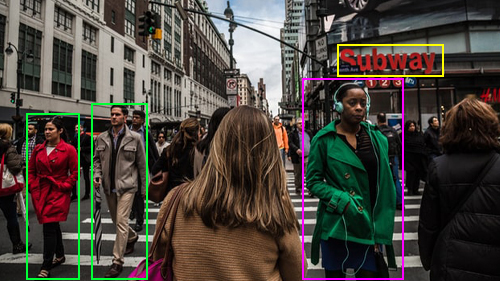
Effortlessly outline objects in a box for high-quality training data for diverse businesses.
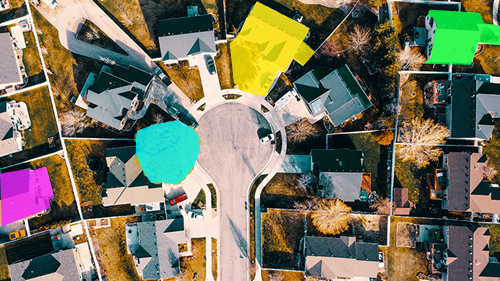
Mark contours in asymmetrical and coarse objects from images and videos, to make it machine friendly.
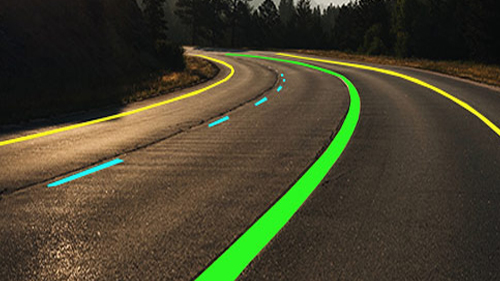
Detect streets accurately to perceive surroundings, ensuring trouble-free driving.
Annotate 2D and 3D patterns in running images and account for all moving objects in a video frame to train a wide range of machine learning models.
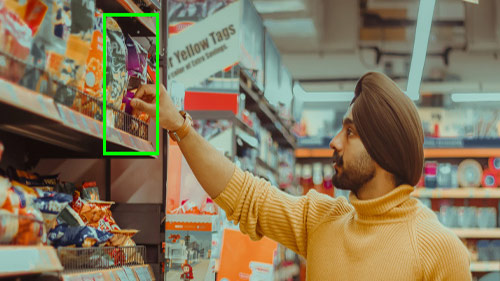
Identify social interactions and differentiate between actions and consequences.
Bring together inputs from multiple sensors and disparate sources such as Radars, LiDARs, and Cameras to develop a single model of the surroundings of a vehicle.
Power autonomous vehicles, drones, and other computer vision applications to enable accurate interpretation of images and video using highly qualified and annotated data
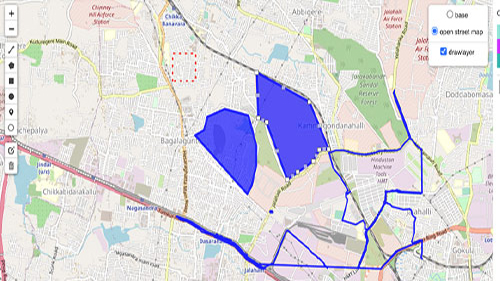
Detect clear and stable points of interest for subsequent processing of various data points.
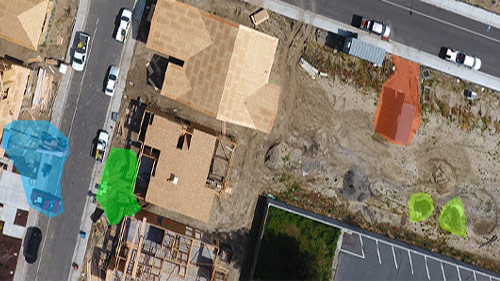
Make asymmetrical and coarse objects in images and videos, machine friendly.
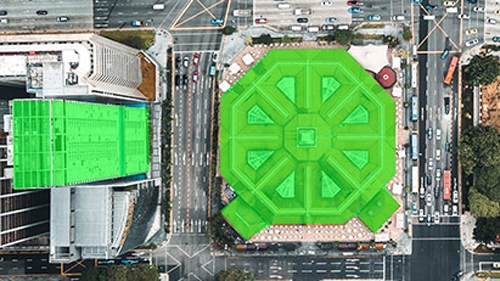
Detect clear and stable points of interest for subsequent processing of various data points.
A picture is equivalent to 1000 words. Several images and videos exist on the internet, especially on social networking sites and search engines. Images can also be derived from textual data and supplied to vision systems These can be used as training data for machine learning, which can in turn be used for AI-ML data annotation or to train image classification and activity recognition systems. From automobile industry, finance to law enforcement and healthcare, every industry has applications that can be automated using Computer Vision.
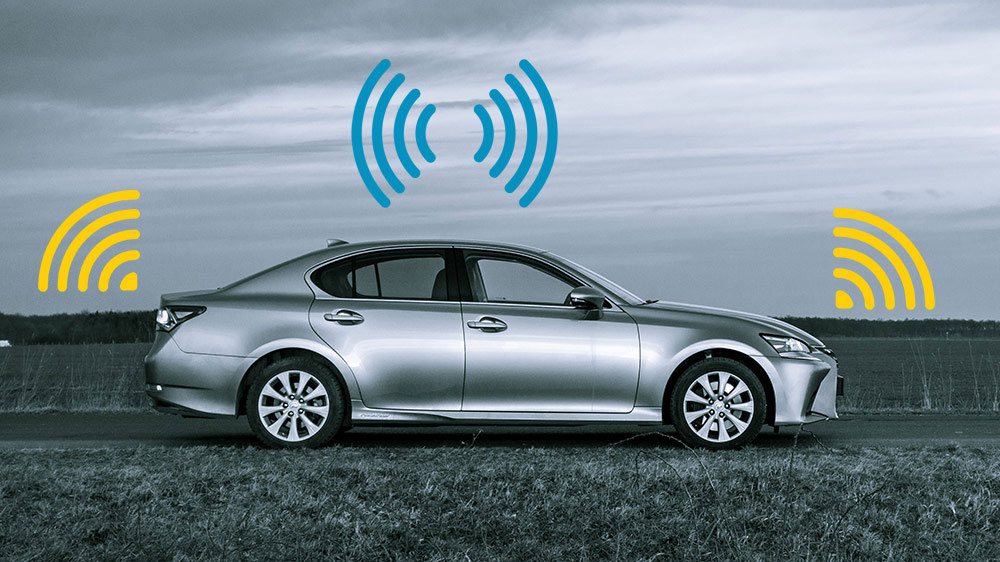
Enable the vehicles of the future to comprehend surroundings and help them perceive different objects and signs on the road to avoid crashes and mishaps.
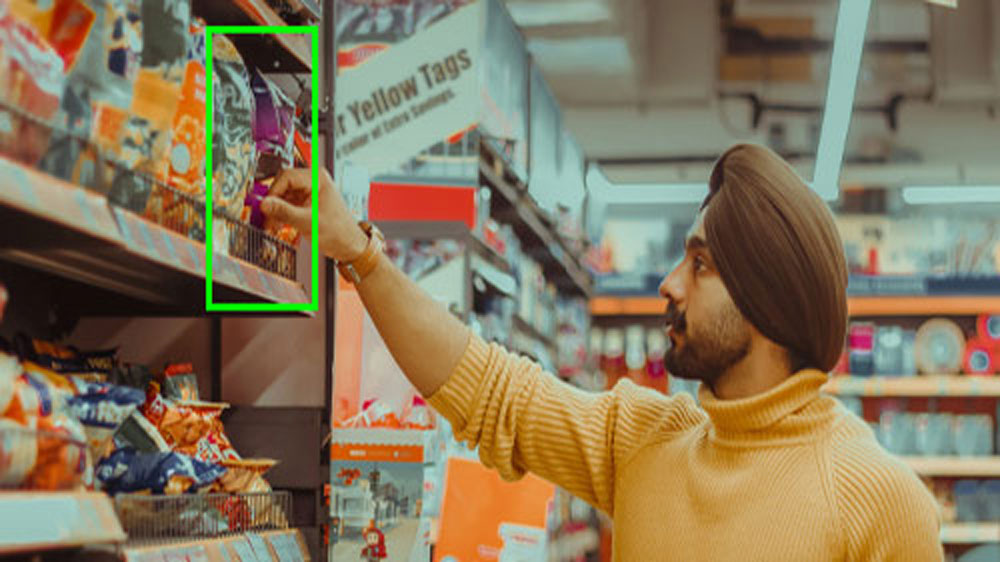
Identify different types of objects sold in retail stores and help visual search machines recognize clothing or other accessories brought by customers, enable complete checkoutless shopping experience or offer an effective solution for quality and process control.
Accurately track players from game footages or poses to identify individual playing styles, drive meaningful insights from the game and enhance spectator experience of a sport.
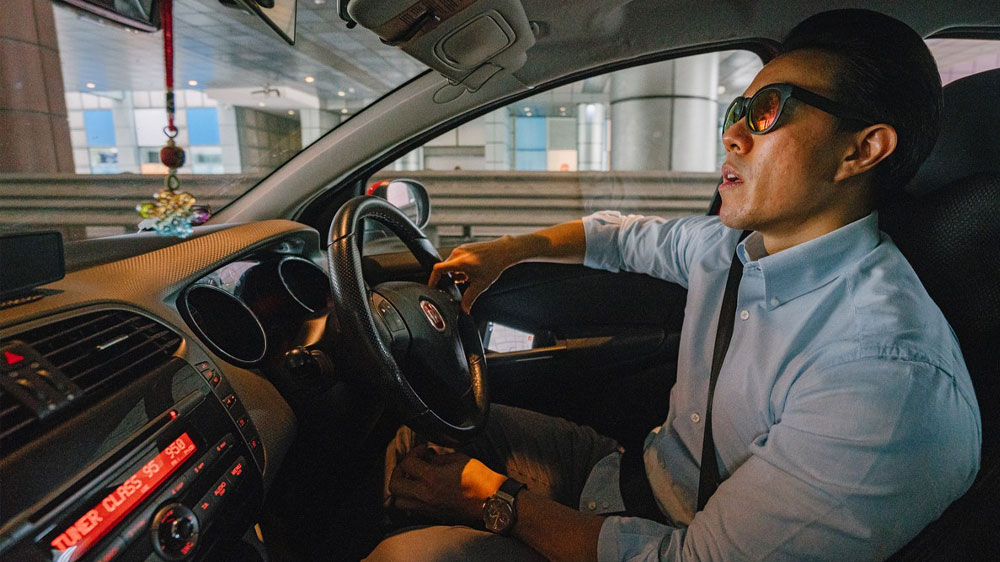
Prevent vehicles and other passengers from being involved in a mishap or accident, by accurately detecting driver drowsiness, distraction, and over- speeding.
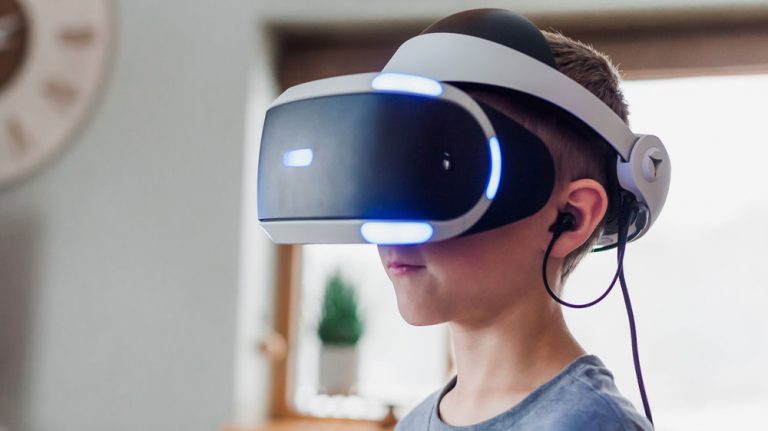
Cover and embed virtual objects on real world imagery to enable computing devices and IOTs to establish concepts of depth and dimensions.
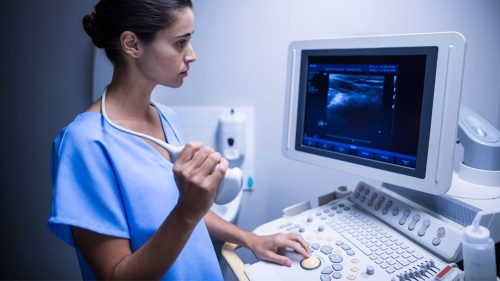
Significantly improve medical diagnosis to analyze various scans and imaging to detect anomalies such as tumors or search for signs of critical illnesses.